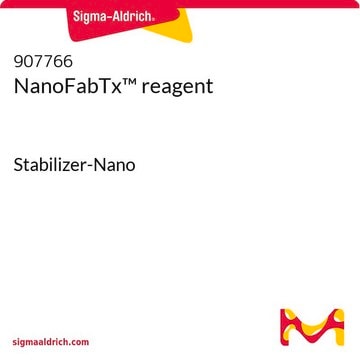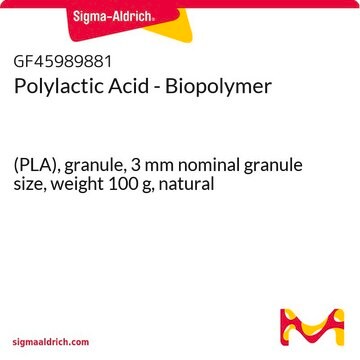918075
NanoFabTx™ PLA-nano
for synthesis of 100 and 200 nm particles
Synonyme(s) :
For nanoparticle synthesis for drug delivery
About This Item
Produits recommandés
Catégories apparentées
Description générale
- A nanoprecipitation protocol to prepare drug-encapsulated nanoparticles in standard laboratory glassware.
- A microfluidics protocol using commercial platforms or syringe pumps.
Application
Caractéristiques et avantages
- Ready-to-use nanoformulation kit for PLA nanoparticles
- Step-by-step protocols developed and tested by our formulation scientists
- Flexible synthesis tool to create uniform and reproducible nanoparticles
- Optimized to make nanoparticles 100–200 nm nanoprecipitation or microfluidics with low polydispersity
- Based on non-toxic, biodegradable polymers
Informations légales
Produit(s) apparenté(s)
Code de la classe de stockage
11 - Combustible Solids
Certificats d'analyse (COA)
Recherchez un Certificats d'analyse (COA) en saisissant le numéro de lot du produit. Les numéros de lot figurent sur l'étiquette du produit après les mots "Lot" ou "Batch".
Déjà en possession de ce produit ?
Retrouvez la documentation relative aux produits que vous avez récemment achetés dans la Bibliothèque de documents.
Articles
NanoFabTx™ platform accelerates drug development with ready-to-use formulations and microfluidic devices for particle synthesis.
NanoFabTX kits enable precise drug delivery with lipid nanoparticles and liposomes for mRNA and nucleic acids.
Professor Robert K. Prud’homme introduces flash nanoprecipitation (FNP) for nanoparticle fabrication, which is a scalable, rapid mixing process for nanoparticle formulations.
Notre équipe de scientifiques dispose d'une expérience dans tous les secteurs de la recherche, notamment en sciences de la vie, science des matériaux, synthèse chimique, chromatographie, analyse et dans de nombreux autres domaines..
Contacter notre Service technique





